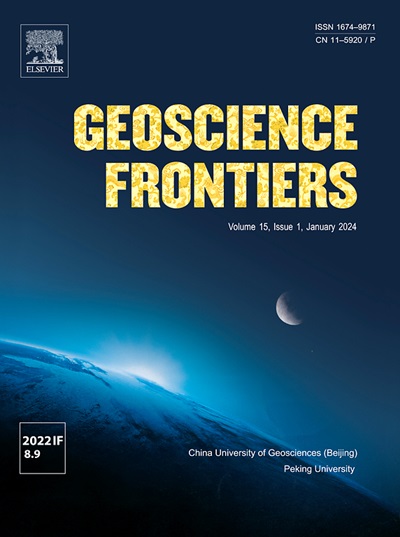A study of PM2.5 transport pathways in China from 2000 to 2021 with a novel spatiotemporal correlation method
IF 8.9
1区 地球科学
Q1 GEOSCIENCES, MULTIDISCIPLINARY
引用次数: 0
Abstract
In the context of urbanization, air pollution has emerged as a significant environmental challenge. A thorough understanding of their transport pathways, especially at a national scale, is essential for environmental protection and policy-making. However, it remains partially elusive due to the constraints of available data and analytical methods. This study proposed a data-driven spatiotemporal correlation analysis method employing the Dynamic Time Warping (DTW). We represented the first comprehensive attempt to chart the long-term and nationwide transport pathways of PM2.5 utilizing an extensive dataset spanning from 2000 to 2021 across China, which is crucial for understanding long-term air pollution trends. Compared with traditional chemical transport models (CTMs), this data-driven method can generate transport pathways of PM2.5 without requiring extensive meteorological or emission data, and suggesting fundamentally consistent spatial distribution and trends. Our analysis reveals that China’s transport pathways are notably pronounced in the Northwest (34% of the total pathways in China), Southwest (22%), and North (21%) regions, with less significant pathways in the Northeast (10%) region and isolated occurrences elsewhere. Additionally, a notable decrease in the number of China’s PM2.5 transport pathways, similar to annual average concentrations, was observed after 2013, aligning with stricter environmental regulations. Furthermore, we have demonstrated the feasibility of applying our method to the transport pathways of other gaseous pollutants. The approach is effective in detecting and quantifying air pollutants’ transport pathways, even in regions like the Northwest with limited monitoring infrastructure, which may aid in environmental decision-making. The study will notably improve the current understanding of air pollutants’ transport process, providing a new perspective for studying the large-scale spatiotemporal correlations.

基于时空相关方法的2000 - 2021年中国PM2.5运输路径研究
在城市化的背景下,空气污染已成为一个重大的环境挑战。透彻了解它们的运输途径,特别是在全国范围内,对环境保护和政策制定至关重要。然而,由于现有数据和分析方法的限制,它仍然部分难以捉摸。提出了一种基于动态时间翘曲(DTW)的数据驱动时空相关分析方法。我们首次全面尝试利用2000年至2021年中国各地的广泛数据集绘制PM2.5的长期和全国运输路径,这对于了解长期空气污染趋势至关重要。与传统的化学输运模型(CTMs)相比,这种数据驱动的方法可以在不需要大量气象或排放数据的情况下生成PM2.5的输运路径,并显示出基本一致的空间分布和趋势。我们的分析表明,中国的运输路径在西北地区(占中国总路径的34%)、西南地区(22%)和北部地区(21%)尤为明显,东北地区(10%)的路径不太显著,其他地区也有孤立的发生。此外,2013年之后,中国PM2.5的运输路径数量显著减少,与年平均浓度相似,与更严格的环境法规相一致。此外,我们已经证明了将我们的方法应用于其他气态污染物的运输途径的可行性。这种方法在检测和量化空气污染物的运输途径方面是有效的,即使在监测基础设施有限的西北地区也是如此,这可能有助于环境决策。该研究将显著提高目前对大气污染物运移过程的认识,为研究大尺度时空相关性提供新的视角。
本文章由计算机程序翻译,如有差异,请以英文原文为准。
求助全文
约1分钟内获得全文
求助全文
来源期刊

Geoscience frontiers
Earth and Planetary Sciences-General Earth and Planetary Sciences
CiteScore
17.80
自引率
3.40%
发文量
147
审稿时长
35 days
期刊介绍:
Geoscience Frontiers (GSF) is the Journal of China University of Geosciences (Beijing) and Peking University. It publishes peer-reviewed research articles and reviews in interdisciplinary fields of Earth and Planetary Sciences. GSF covers various research areas including petrology and geochemistry, lithospheric architecture and mantle dynamics, global tectonics, economic geology and fuel exploration, geophysics, stratigraphy and paleontology, environmental and engineering geology, astrogeology, and the nexus of resources-energy-emissions-climate under Sustainable Development Goals. The journal aims to bridge innovative, provocative, and challenging concepts and models in these fields, providing insights on correlations and evolution.
 求助内容:
求助内容: 应助结果提醒方式:
应助结果提醒方式:


